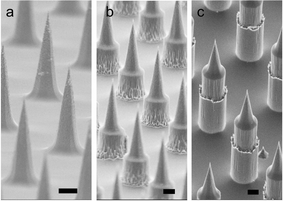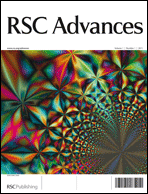Check out RSC Advances issue 6 which has just been published online! It contains 66 articles across a broad range of multidisciplinary topics such as electrochemistry, materials, graphene, photocatalysis, solar cells, DNA, photocleavable biotags, green chemistry etc… Below is a taster of what is in issue 6. Please note that all of our 2011-2012 content is free to access upon a simple registration process.
There are 3 reviews covering:
Tissue engineering
Scaffold-free tissue engineering using cell sheet technology
Yuji Haraguchi, Tatsuya Shimizu, Masayuki Yamato and Teruo Okano
RSC Adv., 2012, 2, 2184-2190
Catalysis
Catalytic versus stoichiometric dehydrocoupling using main group metals
Robert J. Less, Rebecca L. Melen and Dominic S. Wright
RSC Adv., 2012, 2, 2191-2199
Bioanalytical
Potential applications of SPR in early diagnosis and progression of Alzheimer’s disease
Lin Liu, Ning Xia and Jianxiu Wang
RSC Adv., 2012, 2, 2200-2204
Papers and Communications cover topics such as:
Physical Organic
Proton-transfer paths in CHO hydrogen bonds
Irena Majerz and Ivar Olovsson
RSC Adv., 2012, 2, 2545-2552
Organometallic
Mononuclear and dinuclear complexes of manganese(III) and Iron(III) supported by 2-salicyloylhydrazono-1,3-dithiane ligand: synthesis, characterization and magnetic properties
Weiwei Zuo, Vitor Rosa, Clarisse Tourbillon, David Specklin, Cheaib Khaled, Mohamedally Kurmoo and Richard Welter
RSC Adv., 2012, 2, 2517-2526
Medicinal
Synthesis, characterization and cytotoxicity study of magnetic (Fe3O4) nanoparticles and their drug conjugate
Biswadip Banerji, Sumit Kumar Pramanik, Samir Mandal, Nakul Chandra Maiti and Keya Chaudhuri
RSC Adv., 2012, 2, 2493-2497
β-Lactam-host defence peptide conjugates as antibiotic prodrug candidates targeting resistant bacteria
Stéphane Desgranges, Carol C. Ruddle, Liam P. Burke, Tara M. McFadden, John E. O’Brien, Deirdre Fitzgerald-Hughes, Hilary Humphreys, Timothy P. Smyth and Marc Devocelle
RSC Adv., 2012, 2, 2480-2492
Green
Cellulose solubilities in carboxylate-based ionic liquids
Bin Zhao, Lasse Greiner and Walter Leitner
RSC Adv., 2012, 2, 2476-2479
CO2 Capture
Polyethylenimine covalently grafted on mesostructured porous silica for CO2 capture
Hodna Kassab, Mahmoud Maksoud, Sonia Aguado, Marc Pera-Titus, Belén Albela and Laurent Bonneviot
RSC Adv., 2012, 2, 2508-2516
CO2 capture from flue gas at high temperatures by new ionic liquids with high capacity
Shuhang Ren, Yucui Hou, Weize Wu, Shidong Tian and Weina Liu
RSC Adv., 2012, 2, 2504-2507
Surface chemistry
Mechanical properties of carbon nanotube–PMMA based hybrid coatings: the importance of surface chemistry
Fayna Mammeri, Joan Teyssandier, Carole Connan, Eric Le Bourhis and Mohamed M. Chehimi
RSC Adv., 2012, 2, 2462-2468
Organic
Synthesis of the novel trimeric benzamides—potential inhibitors of protein–protein interactions
Oleg V. Kulikov and Andrew D. Hamilton
RSC Adv., 2012, 2, 2454-2461
Microchips
The development of affinity capture devices—a nanoscale purification platform for biological in situ transmission electron microscopy
Katherine Degen, Madeline Dukes, Justin R. Tanner and Deborah F. Kelly
RSC Adv., 2012, 2, 2408-2412
Printed conductive features for DNA chip applications prepared on PET without sintering
Albert R. Liberski, Joseph T. Delaney, Aleksandra Liberska, Jolke Perelaer, Martha Schwarz, Thomas Schüler, Robert Möller and Ulrich S. Schubert
RSC Adv., 2012, 2, 2308-2313
Polymers
Phase-separated binary polymers spin coated onto microwrinkles
Takuya Ohzono and Hiroyuki Kitahata
RSC Adv., 2012, 2, 2395-2398
Food
Changes in morphological and nano-mechanical properties of the milk fat globule membrane during processing
Thakshila S. Balasuriya, Lydia Ong, Sally L. Gras and Raymond R. Dagastine
RSC Adv., 2012, 2, 2384-2394
Comments Off on Issue 6 is a good mix!















